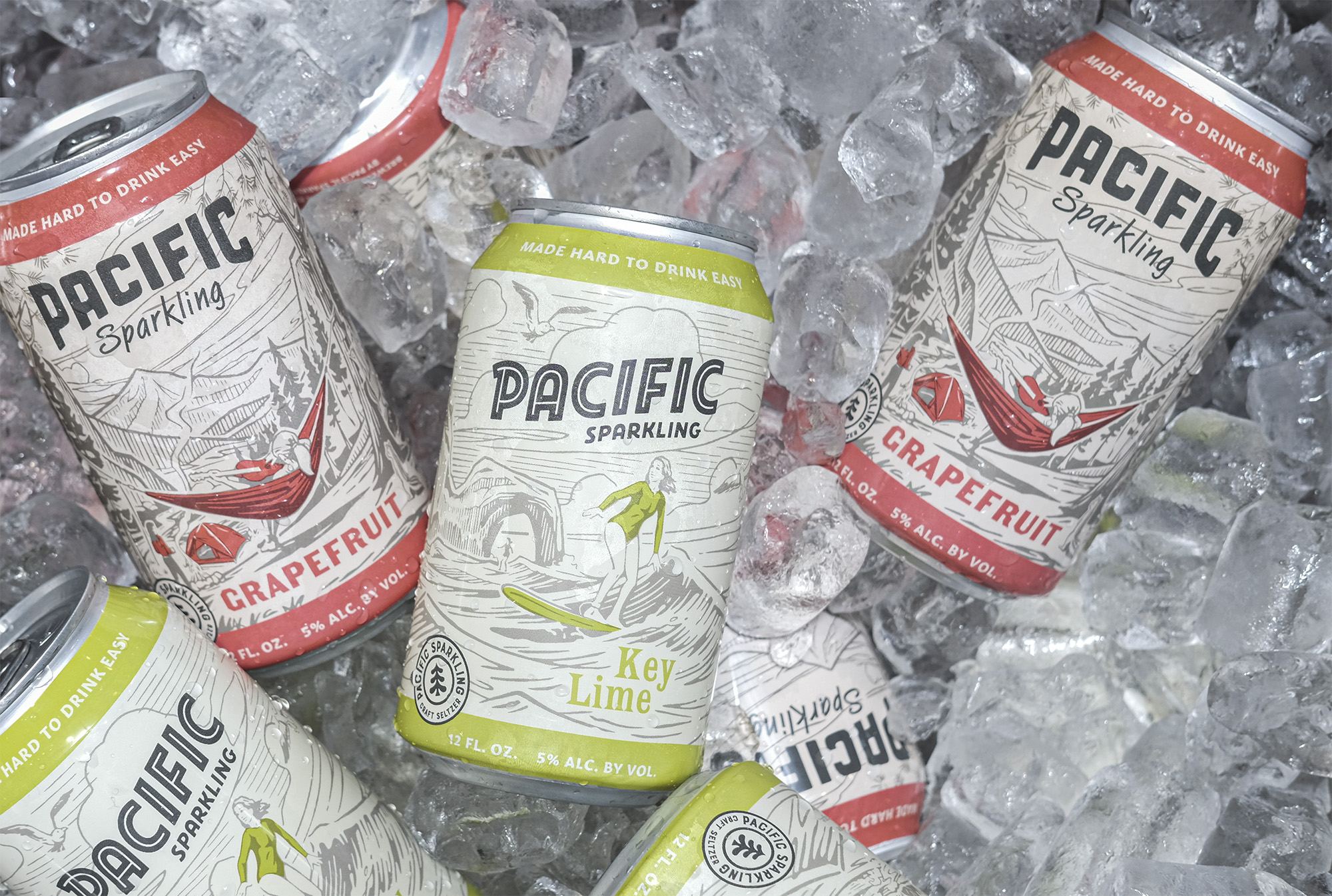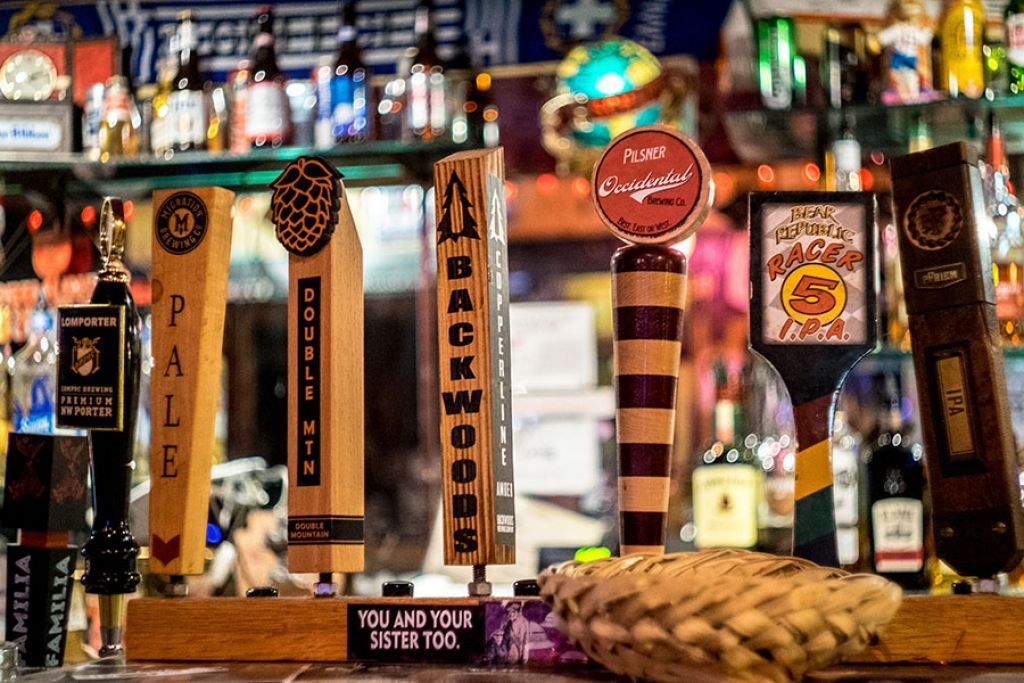With the state adding on average 27 new breweries annually, can consumers keep Oregon beered?
A specter is haunting Oregon’s brewing industry: The state’s reputation as a frosty, frothy microbrew wonderland is still going strong, but a rash of closures has some worried the craft brew industry is in decline.
Burnside Brewing, a nine-year veteran of Oregon’s brew culture abruptly bit the dust this year. Bridgeport Brewing, the state’s oldest operating brewery, also turned off its taps for good, citing declining sales since 2017.
Forty breweries have shut doors in Oregon in the past five years, leading some commentators to say Oregon’s beer bubble is about to burst.
Of course, anyone who has perused the endless aisles of colorful microbrews at the supermarket will know that craft beer is still very much a part of Oregon culture. Thirty of Oregon’s 36 counties have more breweries per capita than the national average, and far more breweries are starting than are going out of business.
Between 2013 and 2018, Oregon added 136 new breweries. Other evidence suggests microbreweries could have more room to grow. While the beer industry startup rate is 40% higher than the average for an Oregon business, its closure rate is lower.
Breweries are only about half as likely to go out of business than the state average. This seems to suggest the market can support even more breweries.
So what’s true? Is there a beer bubble, or is Oregon’s brewing scene just incredibly dynamic?
RELATED STORY: Shutdown aftermath hits craft beer
I spoke to state economist Josh Lehner, who publishes regularly through the Oregon Office of Economic Analysis. He answered my question with a more rhetorical question from Portland economist Joe Cortright:
“Are there too many barbeque restaurants in Kansas City?”
That is to say, simply looking at the number of microbreweries in Oregon does not do enough to tell you about the general state of the Oregon beer market.
Oregon has a cultural sweet tooth for beer, and a fondness for the newest and most dynamic brands. It’s hard to say there are too many or too few breweries just by looking at the sheer number of beer distributors.
Oregon produces 25 times the volume of craft beer than the national average, and what makes Oregon such a welcoming place for newcomers is the fact that the eight largest breweries in the state still account for half the total, while the top 20 comprise a whopping 75% of beer consumption.
There’s still a lot of room for new kids on the block to take a bite out of the more established brands.
Oregon has also seen a blossoming of its tourism industry over the past decade, one that has no doubt contributed to its status as a beer tourist destination.
“I think beer tourism is a thing,” says Lehner. “What do people come to Oregon for tourism? Scenic attractions and breweries and wineries.”
Like the sudsy amber liquid contained within its cans, the Oregon beer market remains enticing. While certain regions in the state might be more competitive than others, says Lehner, some markets may in fact be underserved.
“There are so many communities in Oregon that look like they are underbeered, particularly on the production side,” says Lehner. “At the same time, though, it seems like there’s a real clustering component to breweries. Places where people go on vacation or on the weekend and have a lot of breweries all seem like they’re successful.”
John Harris, owner and brewmaster of Ecliptic Brewing Company, which was founded in 2013, credited Ecliptic’s success to its ability to react to the market, a pinch of luck and surrounding himself with capable people.
“Our sales manager, Erin Grey Kemplin, came on board in 2015 and proceeded to grow the business,” he says. “We got a little marketing help from the solar eclipse of 2017 also.”
Aside from a good sales manager and cosmic intervention, part of what makes Ecliptic Brewing Company successful it is ability to react to what consumers want.
“My whole brewing philosophy is that we don’t have a philosophy,” says Harris.
“When we brought out our Starburst IPA, at first we were getting ready to bring out our house IPA which was called ‘Orbiter,’ which was a West Coast IPA; but the market was saying there was a need for more tropical IPA. We made a decision at the last minute to switch to Starburst.”
It wasn’t easy to find all the hops he needed to bring Starburst IPA to shelves at the eleventh hour, but Harris and his company reacted to what the market was saying, and it paid off.
Ecliptic isn’t producing enough beer to satisfy all the demand for its product, he says.
His company also made the jump to canned craft beer before it became a norm, a move that led to much reward.
“We’re in a lucky position where our beer is in demand,” he says.
Ted Miller, former brewer at the now-closed Seven Brides Brewing, says that his brewery became a victim of its own success.
“When I first started, if we wanted to make more money we could just brew more beer. We were brewing an IPA, which was really in at that time. We were new and we were shiny,” says Miller. “But then that IPA started to slide off and our distributors kind of moved on from us.”
With all the brewery dynamism in Oregon, it becomes challenging for smaller brands to stay ahead of the market, not to mention distinguish themselves from the competition.
RELATED STORY: Craft brewers’ identity getting ‘murky’
For older and more established brands, like Eugene-based Ninkasi Brewing Company, staying ahead of all the newcomers takes vision and creativity.
Founded in 2006, Ninkasi Brewing Company might not be seen as veteran brand in some industries, but for the Oregon beer market, which averages 26 breweries opening a year, being in business 13 years makes Ninkasi something of an old timer.
“For a craft brewery we’re a little bit older, but in any other type of business we would be considered a younger company,” says Jaclyn Rudebeck, Ninkasi’s chief operating officer. “It’s a strange dynamic.”
For Rudebeck, all the competition and dynamism in Oregon’s beer industry is actually an opportunity.
“One of the benefits of the market becoming increasingly diverse, at least in terms of the breweries operating in it, is that it allows us to see what innovations are resonating with customers,” she says.
“As a larger company we have been able to increase the speed at which we can bring new innovations to market.”
After 13 years, Ninkasi must still find ways to be new, as well as ways to satisfy loyalists who already love what they do.
 Pacific Sparkling Seltzer is Ninkasi’s latest addtion to its menu.
Pacific Sparkling Seltzer is Ninkasi’s latest addtion to its menu.
“We have to be specialists. We have to be boundary pushers. There’s no room for us to get complacent,” says Rudebeck. “We have to constantly be evolving, things like launching our seltzer line, and investing in a pilot brewing system so we can brew smaller batches in sellable quantities.”
Ninkasi has also led the charge on environmental practices and sustainability, which they hope will continue to generate a positive image. Other larger distributors, such as Deschutes brewing, have floundered in this area, receiving a run of bad press after pulling support for Oregon’s cap and trade bill.
RELATED STORY: Cap and trade: Businesses subject to “bullying campaign”
Even if there’s no “beer bubble” in Oregon, the market is dynamic, full of high-caliber players. That’s great for beer lovers, for whom the competition has been a blessing, and not as bad as it may seem for smaller brands, which still have a good shot at survival.
But there is no guarantee the explosion of new microbreweries can continue forever. As the years go by, breweries in Oregon will probably see a slowdown of some kind or another, especially considering that millennials, who spend far more on beer than any other generation, begin to start families.
“Millennials are getting older and they’re having children,” says Lehner, “They might start spending their money on more family-friendly activities.”
There’s also Oregon’s increasingly prevalent cannabis industry, which competes for customers. Although Lehner doesn’t see evidence of Oregon’s cannabis eating into beer sales just yet, he does believe the beer market is going to slow down eventually.
Either the beer market will gradually slow down and reach equilibrium, or consumption will decline and there will be a correction. But as much as Lehner believes the beer boom will fade, he doesn’t see it happening in the immediate future.
“I don’t think breweries can continue to close at half the rate of other companies forever. I think it that will slow down and see something of a more normal market,” says Lehner. “But I don’t think we’re there yet.”
To subscribe to Oregon Business, click here.






